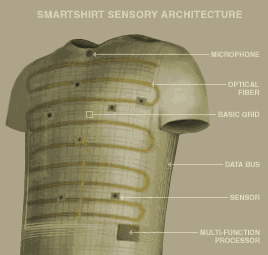|
Ultrasound removes fatty particles from
the blood
At the annual convention of the
European Association for Cardiothoracic Surgery in Monaco
the Swedish physician Dr. Henrik Jönsson introduced a
new method of removing fatty particles during a heart surgery.
At this cell-gentle method the blood is flowing in
parallel switched tubes in the heart-lung machine and treated
with ultrasound waves simultaneously.
The result: 97
percent of the fatty particles can be removed by filtrating up
to 1500 mililiters blood per hour; even very small fatty
molecules have been removed in this manner.
www.aerzte-zeitung.de, Jan. 9, 2003
MICRO SURGERY ON ADVANCE
With the
introduction of the so called Fallkostenpauschale in
Germany, the micro surgery becomes an competitive alternative
to the conventional surgery.
At this method only small cuts
are done and the organs are treated with miniaturized tools.
Up to now the method was only practiced for knee injuries or
gastro-intestinal problems. Meanwhile it also becomes
applicable for removing tumors from the brain and implanting
cardiac valves.
Dr. Grönemeyerof the
Institute for Micro Surgery of the University Witten
Herdecke, who successfully treats disk damages, suspects
that each hospital with a computer tomograph will be able to
introduce this method.
www.handelsblatt.com, Jan. 2003
Newcomers in Cure Methods
For patients
with chronic injuries a new active substance has been
developed to heal wounds without scars.
The idea
originated from the fact that a fetal surgery within the womb
effected no scars.
Jeffrey Hubbels from Zurich
and his team developed a new bandage on the basis of
polyethylene glycol and the corresponding biomolekules.
Collected from
www.geo.de
Some Key Facts of the
Russian
Economy:
Russia:
Population
[million]: 144,8
GDP
[US$;
billion]: 310
Health
Expend.[US$; billion]: 9,3
Health Exp. [%
of GDP]:
3,0
Med. Dev. Market [US$; mill.]: 800
Leading
Foreign Supplier: Germany
Source: mediSTAT,
Jan. 2003
Sound Emission Analysis of the Knee
Prof. Hans-Joachim Schwalbe of the
University Gießen-Friedberg and his colleagues
developed a method measuring the knee sounds by means of a
probe.
The probe works like a microphone.
After these
measurements the regular gnashing sounds of the knee are
filtered out.
The remained sounds can reveal something
about damages at the joint cartilage or the bone solidity.
Collected from
Die
Ärzte Zeitung, Dec. 18, 2002
|
Will we give up reading glasses in
future?
In future, the eyesight will be adjusted
by implants so that sight weaknesses can be evened
out.
Through a "Smart Eye Band", composed of a nickel,
titanium, noble metal alloy as well as ionized polymers, the
eyeball will be adjusted and the picture focuses.
It can be
implanted without repulsion reactions.
This biocompatible
active substance combination is supposed to be marketed in
three to five years.
Details:
www.handelsblatt.com, Jan. 2003
Similar research has been performed at the
University of Duisburg in the framework of a project
called IOS
(Intraocular Sight
Assistance).
The goal is to even out the eyesight of
patients with opacity of the cornea by using glasses with a
small camera which transfers the impulses into the eye by
means of a chip.
For more information visit:
www.aerzte-zeitung.de
Jan. 22, 2003
SENSATEX - the New Smart-Shirt

"In future, clothes will simply not lie
around. They will be useful for us", says Cathy Newman
of the National Geographic.
Prof. Jayaraman of the
Georgia Institute of Technology invented a shirt that
can measure body functions like heart beat, respiration,
oxygen within the blood, as well as body temperature by
several integrated sensors and conductive fibers.
In
particular, this garment is usable especially for risk
patients or babies by means of remote monitoring.
Read
more at:
www.nationalgeographic.de, Jan. 2003 or
visit
www.sensatex.com
New Application
of Ultrasound for Diabetics
The research group of
Dr. Nadine Barrie Smith of the Pennsylvania State
University developed a new painless system for the
application of insulin.
At this method the insulin is
transported through the skin by the aid of ultrasound.
The system weighs only 22 grams, and consists of four
parallel switched signal transformers.
It was proved by
animal experiments that the glucose level was decreased by
this treatment.
Collected from
Die
Ärzte Zeitung, Dec. 20, 2002
Pacemakers
without Batteries
The physicist Ajay K.
Sood of the Indian Institute of Science developed a
flow sensor consisting of a bundle of singe-wall carbon nano
tubes.
The flow of the blood generates an electric reaction
at the sensor which creates electric charge.
The charge
which is measurable from the outside can be used for
pacemakers instead of batteries.
Collected from
"Technologie-Nachrichten", Dec. 2002
Important
references:
www.iisc.ernet.in
|